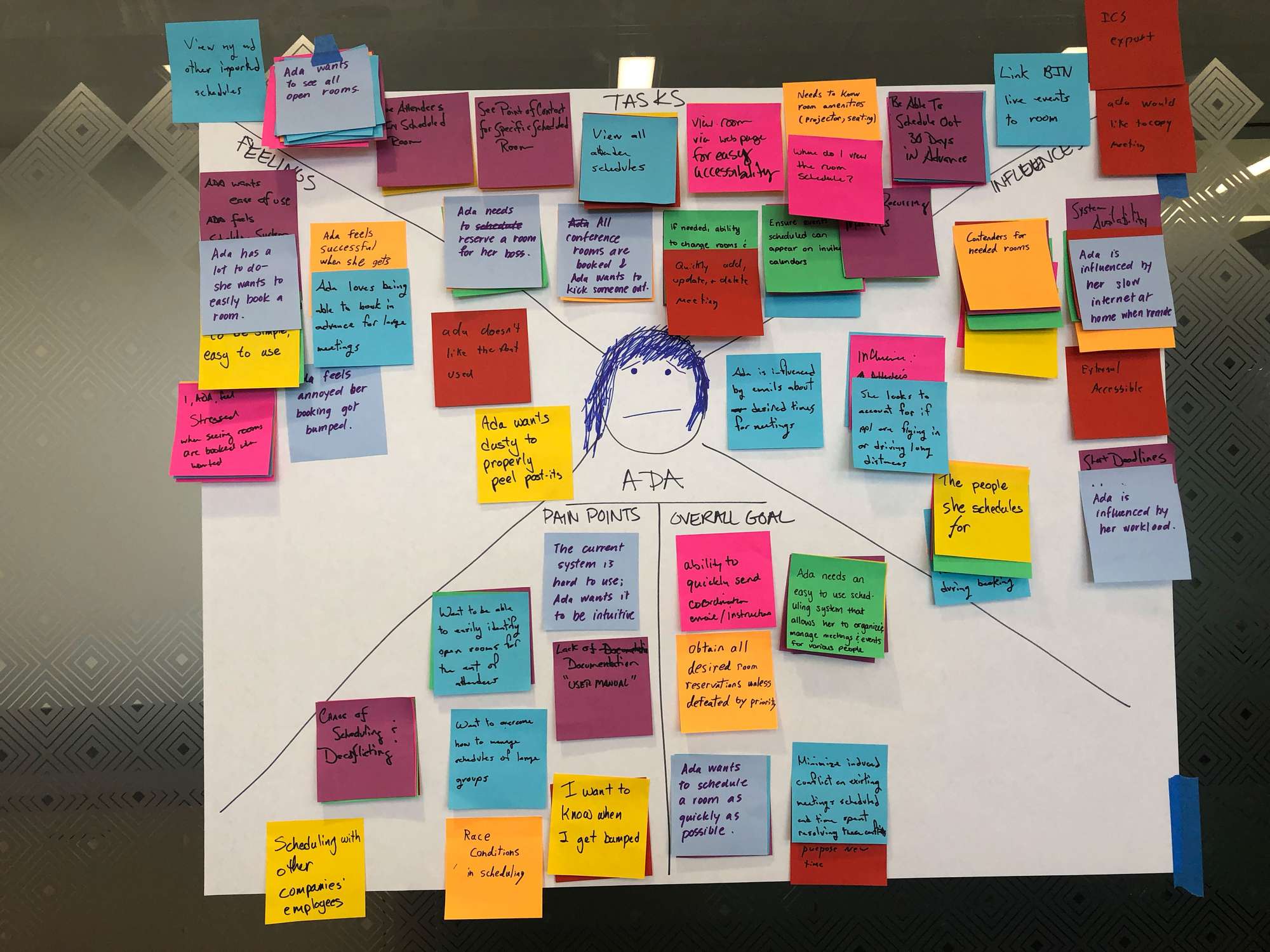Empathy Mapping
A collaborative tool for gaining insight about humans (customers, users, stakeholders, etc.).
Tim Beattie
Val Yonchev
What Is Empathy Mapping?
An empathy map is a collaborative tool used to develop insight into customers, users, etc.. It is often a starting point for gaining empathy for the people a team is solving problems for. Like a persona, an empathy map can represent a group of people, such as a user or customer segment.
- A way to form a better understanding of users and build personas
- The information is captured as a brainstorm for a team to develop assumptions about the people
- The information can also be directly added from interviews, observation and other facilitated conversation exercises
- Senses captured can include what the person is seeing, thinking, doing and feeling with information captured on a big visible chart
The Empathy map has been created as a practice by Dave Gray of XPLANE
Why Do Empathy Mapping?
Empathy maps should be used throughout any UX process to establish common ground among team members and to understand and prioritize user needs. In user-centered design, empathy maps are best used from the very beginning of the design process. Both the process of making an empathy map and the finished artifact have important benefits for the organization:
-
Capture who a user or persona is. The empathy-mapping process helps distill and categorize your knowledge of the user into one place. It can be used to:
-
Categorize and make sense of qualitative research (research notes, survey answers, user-interview transcripts)
-
Discover gaps in your current knowledge and identify the types of research needed to address it. A sparse empathy map indicates that more research needs to be done.
-
Create personas by aligning and grouping empathy maps covering individual users
-
-
Communicate a user or persona to others
- An empathy map is a quick, digestible way to illustrate user attitudes and behaviors. Once created, it should act as a source of truth throughout a project and protect it from bias or unfounded assumptions.
-
Collect data directly from the user. When empathy maps are filled in directly by users, they can act as a secondary data source and represent a starting point for a summary of the user session. Moreover, the interviewer may glean feelings and thoughts from the interviewee that otherwise would have remained hidden.
How to do Empathy Mapping?
When to use it?
This tool can be used at various times in the product lifecycle. If there is a need to gain new understanding about people that have an impact on the growth or use of an application, this may be a good time to consider an empathy map. Particularly when first learning about new customers, users, or stakeholders.
- A tool to identify pain points, opportunities and starts to form a basis for improvement and optimization
- Captures information and learning directly from the end user or customer effected by the system/application/solution in question
- Enables a direct connection between important stakeholders and the product team (for example, developers of an application can learn directly from end users using it)
Facilitation Tips
Prepare the team by letting them know this activity seeks to gain empathy for the 'human' solving a particular problem for. Let everyone know they are there to step into the shoes of the user, customer, etc..
- For an immersive activity, use large craft paper or a whiteboard to draw the map
- Have everyone write on sticky notes to develop their assumptions around the map
- Make sure to use different color sticky notes to represent different ideas from the team
- If using to collect feedback from a interview session, the same can be done with sticky notes
- Make sure to include a representation of the face in the middle of the map (this should differ based on the pain points)
- Give your empathy map a name! Similar to a persona it is easier to make a human connection when a name is added
Look at Empathy Mapping
Links we love
Check out these great links which can help you dive a little deeper into running the Empathy Mapping practice with your team, customers or stakeholders.

